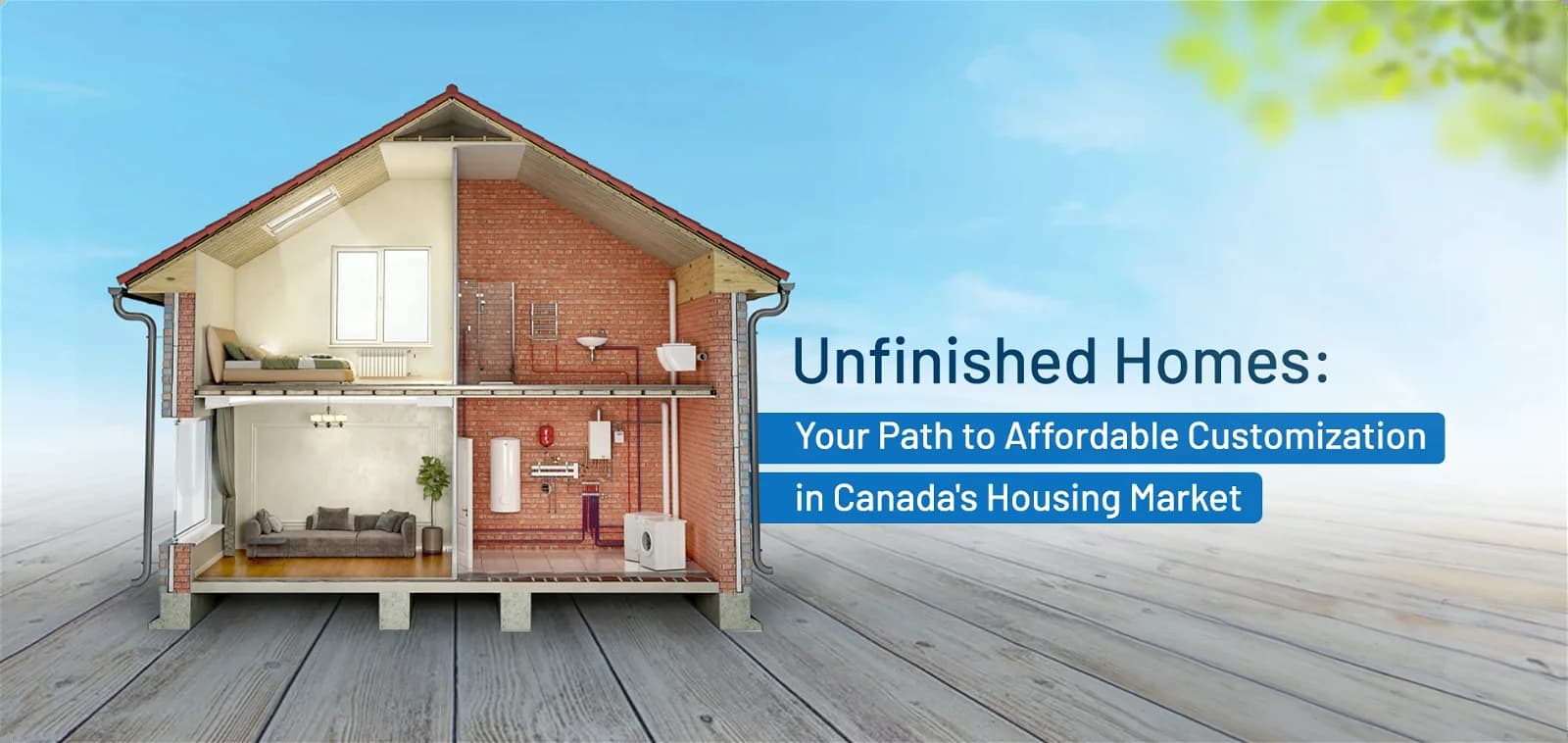Blog Search
How Does Buying and Renovating Unfinished Homes Work?

In a country where home prices in major cities like Toronto, Vancouver and Mississauga are about to punch a hole in the sky and the constant bickering between policy and inflation rates show no sign of shutting off, would-be home buyers need all the options they can get. The shortest distance between two points is a straight line and unfinished homes are just the option for that. If the Ontario market is unwilling to meet your home-buying needs then maybe it's time to take that straight line and build one for yourself.
Unfinished Homes - Tell Me More
Generally speaking, these are homes where construction began at one point but never got completed due to reasons ranging from financial constraints to life changes. Although unfinished homes come in all shapes and sizes here's what you can expect usually
- Just the foundation laid
- Walls and roof structure complete
- Rough plumbing and electrical wiring installed
- Near-finished state with exposed framing and unfinished interiors
Unfinished homes lack a universal definition and that is why when buying one you have to carefully examine the level of completion on each property. It is also important to note that a thorough inspection is a must in the case of these properties as it is common for these homes to harbor hidden problems.
Full Disclosure-What You Get What You Don't

Unfinished homes are generally cheaper than completed ones, offering savings of 10% to 40%. This can be especially attractive in expensive housing markets like Canada's major cities. Then, you have the freedom to personalize the design and finishes, tailoring the home to your exact needs and preferences. This level of control wouldn't be possible with a finished house. Additionally, construction loans specifically designed for unfinished houses distribute funds based on progress, enabling better financial control.
However, completing the build requires construction expertise, navigating permits, and finding reliable contractors. That is why most likely you will need to hire professionals which will add to the overall cost. In the case of unfinished homes hidden issues, delays, and cost overruns are fairly common, potentially forcing you to exceed your budget. Most importantly for the larger part of the construction process, you will not be able to live in that home which will lead to alternative housing bills.
Find The Right One - Explore Locate Question
As we have established when buying an unfinished home, the cost extends beyond what you pay on closing day. Simply finding an unfinished home in your preferred location is not enough it has to be something worth the time and effort of renovations.
That is why you need to go beyond the usual: explore builder websites, local forums, and "for sale by owner" options. Focus on understanding the specific stage of completion. Is it just the foundation, a framed shell, or a near-finished state? Each stage requires different skills, tools, and budgets. Inspect visible details like foundation type, framing materials, and workmanship to ensure they meet your quality standards.
Don't forget the paperwork! Verify the availability of construction plans and permits, and confirm that zoning regulations allow your desired modifications. Seek assistance from specialized real estate agents, builders, and contractors to make the most informed decision.
Read More: The Ultimate Checklist for Moving to a New Home
The Renovation Plan
Goes without saying but transforming an unfinished house into a livable space requires strategic planning. Begin by meticulously assessing the current state, and identifying essential improvements needed for functionality and comfort. Think plumbing, electrical systems, insulation, and basic structural integrity. Next, prioritize these upgrades based on urgency and your budget, addressing critical aspects like safety and weatherproofing first.
Now, the big decision: renovate all at once or phase it over time? Consider your financial resources and desired living situation. Phasing allows for gradual change along with financial flexibility, but a single, larger project can potentially be more efficient and cost-effective in the long run. We suggest seeking licensed contractors and architects with proven experience in unfinished home transformations. Don't just settle for the first quote - collect multiple estimates and thoroughly vet references to ensure you find the right team.
Finally, communicate your vision for the transformed property. Engaging professionals who understand your vision and align with your style will create a successful and satisfying renovation journey. With careful planning, smart prioritization, and the right team by your side, you can turn your unfinished house into a home that reflects your vision and provides lasting comfort.
Blog Search
Popular Blogs
Popular Blogs
The trademarks MLS®, Multiple Listing Service® and the associated logos identify professional services rendered by REALTOR® members of CREA to effect the purchase, sale and lease of real estate as part of a cooperative selling system.

